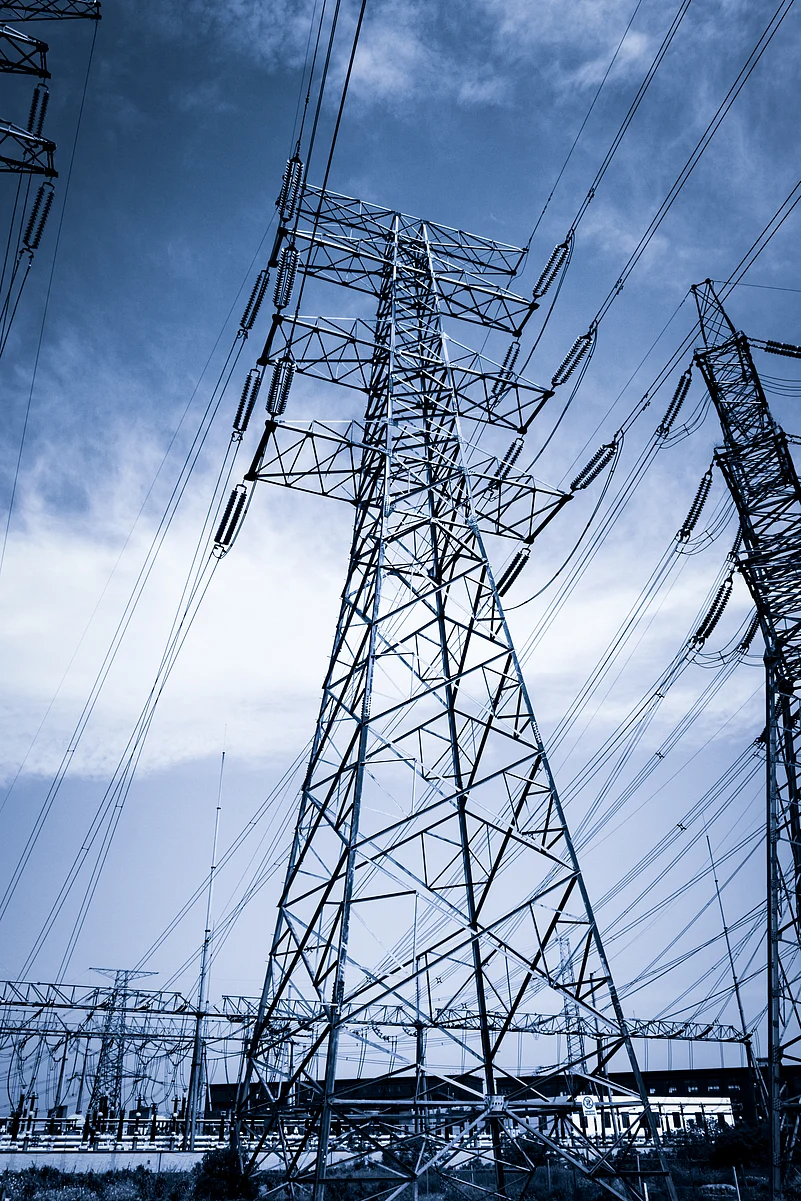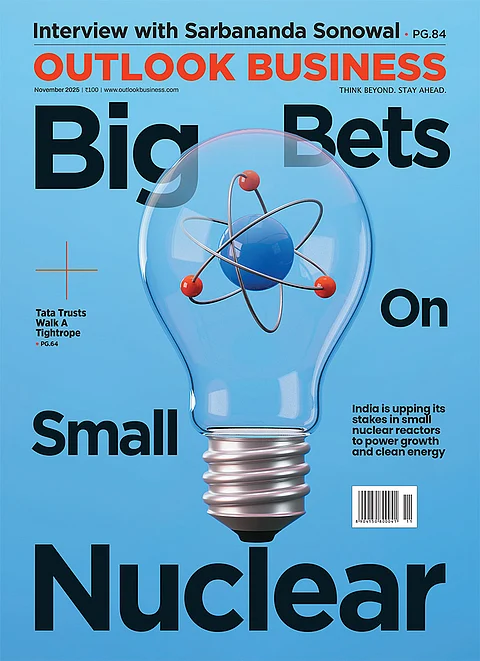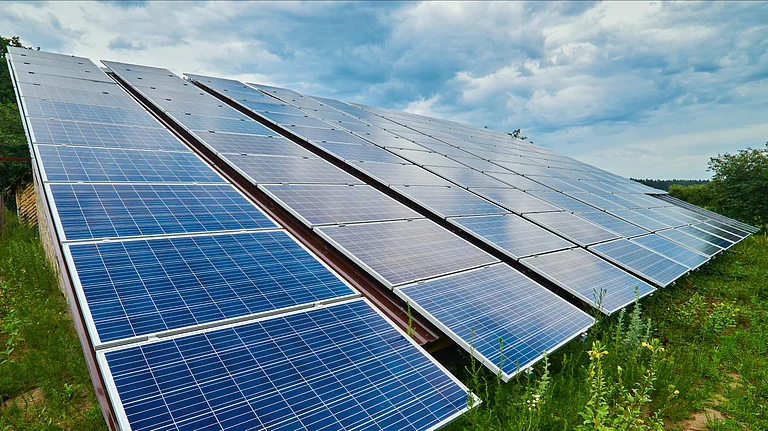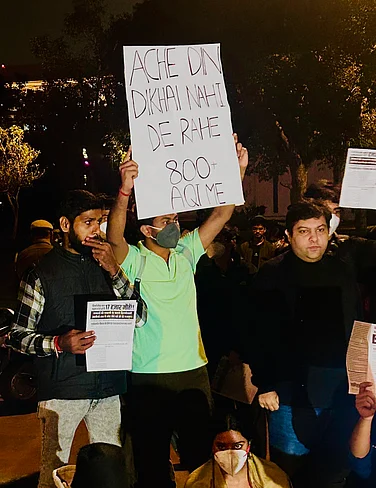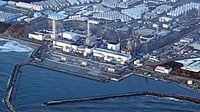"Dunkelflaute" are events where low wind and solar generation coincide with high demand. This phenomenon was observed significantly in Europe during the few days of November and December 2024. This led to a spike in day-ahead electricity prices in Germany and parts of Nordic countries. As India races towards increasing the share of solar and wind in its energy mix, it is important to create practical, scalable solutions that can be deployed quickly to manage such situations through demand-side management across interconnected markets and the creation of dispatchable capacities that can act as effective backstops.
Hybrid Renewable Energy (RE) Parks with Integrated Storage and Dispatchable Bioenergy:
India’s unique position in the context of the availability of biomass can be leveraged to develop large-scale hybrid renewable energy parks. Here, solar photovoltaic (PV) and wind energy generation capacities can be positioned with integrated battery storage and bioenergy plants. Fuelled by agricultural waste, the bioenergy component can primarily consist of compressed biogas, densified biomass (briquettes and pellets) and torrefaction, which can provide dispatchable power during low-variable clean energy generation.
AI-based sophisticated energy management systems can optimise battery storage dispatch and bioenergy output using real-time weather forecasts and demand projections. This can facilitate greater grid stability and significantly reduce dependence on fossil fuel backups. Such an approach can integrate the country's agricultural and energy value chains. It can boost rural livelihood opportunities while infusing innovation in agricultural waste management. Pilot projects can be kicked off near existing transmission infrastructure to optimally utilise land parcels that may not be suitable for agriculture. Such a project can qualify to receive financial support under various existing policies of the union/state governments.
Distributed Demand-Side Flexibility Aggregation Platform
All major appliances/machines are increasingly becoming ‘smart’. AI/machine learning has enabled them to become largely autonomous as far as power management is concerned. This has created an opportunity to build flexibility mechanisms to aggregate distributed demand-side flexibility through a nationwide platform. This involves incentivising commercial, industrial and residential consumers to calibrate their electricity consumption during peak demand.
Automated demand response can be triggered to shift loads from critical hours to non-peak hours. Virtual power plants with a focus on leveraging smart capabilities of appliances and industry 4.0 process controls can be initiated towards better power management. The proposed platform can act as a virtual power plant, providing critical flexibility during Dunkelflaute events. Partnering with digital network companies and machine manufacturers to infuse smart attributes and develop user-friendly mobile apps can generate solutions for the future. Innovative pricing and reward mechanisms can be rolled out to incentivise mass participation.
Deploying Pumped Hydro Storage (PHS) in Tandem with Battery Networks
India’s diverse geographical features have gifted it with significant untapped potential for PHS. Developing new and wildlife-cognisant PHS facilities in suitable hilly regions, particularly in the Himalayas and Western Ghats, can be a strategic move. PHS facilities can store excess renewable energy as potential energy during high clean energy generation periods and release it during low ‘Dunkelflaute’ events.
Designing modern closed-loop PHS systems with shorter development timelines and lower capital costs can minimise environmental impact on the surroundings. Relevant government agencies can publish a ‘PHS atlas’ to help conduct detailed feasibility studies and secure environmental clearances for promising PHS sites. Streamlined regulatory processes and financial incentives for PHS development can accelerate the country’s transition to net zero. A rapid and decisive move for the deployment of large-scale BESS can incentivise private sector participation through streamlined permitting and financial incentives.
Diversification of Renewable Energy Sources and Geographic Distribution:
India is a large country. To mitigate the impact of localised weather patterns, promoting diversity in the country’s renewable energy portfolio makes strategic sense. This entails promoting the development of appropriate offshore wind farms, which often exhibit different generation profiles compared to onshore wind and solar. Distributed renewable energy generation can be encouraged across diverse geographical regions, leveraging India's varied climatic zones. This will create a more resilient and geographically balanced renewable energy supply, reducing the nationwide risk of simultaneous low-generation events.
Development of Flexible Gas-Based Power Plants with Carbon Capture and Storage (CCS) Readiness:
Recognising the need for dispatchable power during the transition, the development of modern, highly efficient gas-based power plants. These plants should be designed with CCS readiness, enabling future integration of carbon capture technologies as they become commercially viable. Governments must establish clear regulatory frameworks and incentives for CCS development. This strategy provides a flexible and relatively low-emission backup power source, ensuring grid stability during ‘Dunkelflaute’ periods while aligning with our long-term decarbonisation goals.
Based on initial findings, experts suggest that the recent power outages in large parts of Spain and Portugal can be attributed to the abrupt mismatch of supply and demand for electricity. Power systems automatically identify such a mismatch and disconnect temporarily in order to protect themselves from ensuing frequency deviations (50 Hz for Europe). Deploying versatile capabilities as suggested above can act as effective backstops against cascading grid blackouts, while quickly jumpstarting the grid and speeding up its recovery.
Prasad Ashok Thakur is an alumnus of IIT Bombay, IIM Ahmedabad and a CIMO Scholar. Labanya Prakash Jena is a sustainable finance specialist at IEEFA and an adviser at Climate and Sustainability Initiative.





